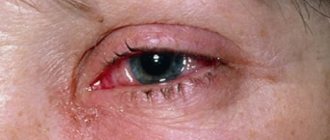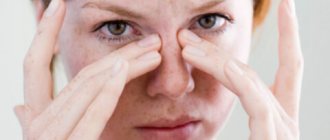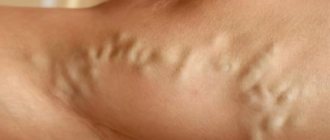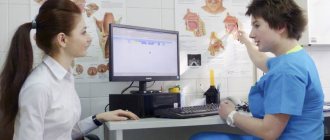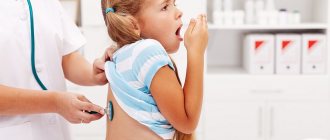Otitis media is the medical name for inflammation of the middle ear caused by infection. The disease is most common in young children, this is due to the structural features of the ENT organs in children (shorter and wider ear canal than in older children or adults). Acute otitis media is an infection that usually develops due to the accumulation of fluid in the middle ear. Otitis media can be caused by viruses or bacteria. Most children suffering from otitis media first develop acute respiratory viral infections or acute respiratory infections, which then progress to otitis media, causing inflammation and swelling in the nasal passages and eustachian tube. The risk of recurrent middle ear infections increases in children who:
- Attend a nursery or kindergarten
- Exposure to cigarette or stove smoke at home
- Have enlarged adenoids, which may interfere with drainage of the eustachian tube
Symptoms of acute otitis media usually include ear pain and fever. Otitis media with effusion (discharge of fluid or pus), also known as adhesive otitis, occurs when there is fluid in the middle ear after the infection has cleared. This condition usually does not cause pain, but may cause hearing loss in the child.
Children with acute otitis media usually improve quickly when treated with anti-inflammatory drugs and with proper care. Sometimes, if the doctor is sure that the disease is caused by bacteria, the child may be prescribed antibiotics. Children who develop adhesive otitis media and other complications may need additional physical therapy treatment.
Description of the disease
Otitis media refers to an inflammatory lesion of the ear caused by various infectious agents - bacteria, viruses or fungi.
The disease is widespread in childhood. According to statistics, before the start of school, pathology is diagnosed in 90% of children. Boys and girls under 5 years of age are especially susceptible to the disease (due to the physiological characteristics of the structure of the ear and imperfect immunity). There are 3 forms of otitis, depending on the location of the inflammation: external, middle and internal. With external otitis, the inflammatory process occurs in the auricle and external auditory canal. The location of otitis media is the middle ear area; internal otitis, respectively - the inner ear. Based on the type of discharge formed, otitis media is divided into serous and purulent.
Any form of the disease requires qualified medical care. Without proper treatment, the disease can cause serious complications and lead to sepsis, meningitis, encephalitis, inflammation of the facial nerve, hearing loss or complete hearing loss.
Ear hurts
There is hardly a happy mother in the whole wide world whose child did not wake up at night crying and saying “ear hurts.” This is how one of the most common diseases of childhood manifests itself - acute otitis - an inflammatory process of the middle ear, located between the inner ear and the external auditory canal. According to the law of meanness, the disease occurs at the most inopportune time (at night, on weekends) and in the most inappropriate place (at the dacha, on a trip), when it is not possible to show the child to an otolaryngologist (ENT doctor), so it is very important that parents can independently provide first aid to a sick child.
Causes of otitis media in children
The most common causes of otitis in a child are:
- diseases of the upper respiratory tract,
- adenoids,
- weakened immunity,
- various viral and bacterial infections,
- hypothermia,
- allergic diseases.
Often, otitis is caused by the mother’s excessive zeal in treating a runny nose, when, when rinsing the nose, liquid is injected into the nasal cavity under pressure, which “drives” the infection into the auditory tube and further into the middle ear. The anatomical and physiological features of the structure of the child’s body also contribute to the development of otitis: the auditory tube connecting the nasopharynx with the middle ear cavity is wider and shorter in children and located more horizontally than in adults.
Knowing the causes of otitis media, you can prevent this disease. It is necessary to give your child maximum attention and care, protect him from contact with sick people, prevent hypothermia and strengthen the immune system: follow a routine, walk in the fresh air, provide adequate nutrition, do hardening from birth, do not smoke in the presence of the child.
It is not difficult for an attentive mother to suspect otitis media. The main symptom of the disease is acute pain in the ear, which the baby will let you know through his behavior, and an older child will tell you about it in words or by prolonged crying.
The infant becomes restless, cries shrilly and for a long time and even screams, and most importantly, refuses to breastfeed, since sucking movements increase the pain.
In the crib, he takes a position on his side, in which the sore ear is pressed against a soft and warm pillow, which helps reduce pain.
Quite often, in children in the first six months of life, otitis media is accompanied by an increase in temperature.
When you press on the protrusion on the auricle (tragus), the pain intensifies, and the child reacts violently - cries, pushes your hand away.
Sometimes there is redness of the ear and swelling of the tissue around it.
First aid for a child with ear pain
First of all, it is necessary to relieve pain, for which you give the child paracetamol in suspension or suppositories at the rate of 10-15 mg of paracetamol per 1 kilogram of the child’s body weight (in the absence of contraindications). Children's Nurofen, taken orally in an age-appropriate dosage or in suppositories rectally, also has a good analgesic effect.
Local treatment in the absence of ear discharge
consists of using painkillers and anti-inflammatory drops, for example, Otipax, and dry heat on the ear area.
Before introducing drops into the ear, they must be warmed to body temperature to avoid increased pain from contact of the inflamed eardrum with the cold solution. But you should not warm the entire bottle of medicine every time, since frequent warming and cooling will quickly cause the drops to become unusable. The medicine should be stored in the refrigerator, and before the procedure, dip a teaspoon in hot water, then wipe dry and drop 6-7 drops from the bottle into it. This way you will warm the amount of medicine needed for one procedure and save the bulk for future use. The medicine is instilled into the external auditory canal: 3 - 4 drops two - three times a day. Cotton pads moistened with warm otipax or camphor oil relieve pain well.
To improve the patency of the auditory tube and in case of difficulty in nasal breathing, vasoconstrictor drops are used in children's dosages (Nazivin, Otrivin, Vibrocil and others).
The sore ear loves warmth; place a soft cotton (flannelette, flannel) napkin (warm, but not hot!) on the ear area, ironed.
If purulent or bloody discharge appears from the ear, stop instilling any medications until the child is examined by an ENT doctor.
The reason to call an ambulance is discharge from the ear canal, indicating perforation of the eardrum, as well as if ear pain is accompanied by an increase in body temperature above 38.5ºC.
Often parents of a child suffering from otitis media ask the question: is it possible to bathe and walk with him outside? This is not contraindicated, but certain conditions must be met:
- the weather outside should not be rainy, wet, windy and cold, because freezing can cause swelling of the auditory tube and nasal mucosa, and this can complicate the healing process;
- the child should not have an elevated body temperature;
- dress your child according to the weather, do not bundle him up so as not to overheat and sweat outside; he should have a hat on his head that covers his ears (but not on hot summer days);
- When swimming, be careful not to get water into your ear;
- After water procedures, the child should be in a warm room.
And don't forget! A visit to an otolaryngologist for otitis media is mandatory!
Symptoms of otitis media
The clinical picture of otitis directly depends on the form of the course, however, symptoms common to all varieties can be identified:
- pain in the ear area;
- the presence of sulfur or purulent discharge;
- hearing loss;
- feeling of ear fullness;
- irritability and tearfulness;
- general weakness.
Otitis externa can be suspected by swelling and redness of the skin of the external auditory canal, peeling of the skin and mucous or purulent discharge from the ear.
At the beginning of the disease, the child suffers from sharp pain, which, after a while, passes and is replaced by a feeling of congestion. As a rule, with the external form of otitis, the quality of hearing does not decrease. The symptoms of otitis media appear sharply and rapidly increase. The child complains of severe shooting pain, aggravated by swallowing, coughing, yawning, etc. In addition, the patient experiences symptoms such as hearing loss, tinnitus, dizziness, increased body temperature, and purulent discharge from the ear. The following manifestations are characteristic of internal otitis: severe dizziness, often with an attack of nausea and vomiting, as well as loss of balance.
In addition, the child may have tinnitus or hearing loss.
Why does the eustachian tube not work well in children?
The most rapid development of the auditory tube occurs in the first 2 years of life:
- in infants, the auditory tube has a horizontal position and very short dimensions (17.5 mm);
- by 2 years, the auditory tube has a length from 17.5 to 37.5 mm, as well as an inclination angle from 10 to 45 degrees;
- The configuration of the auditory tube in 7-year-old children is no longer different from that of an adult.
The horizontal position of the auditory tube makes the middle ear more vulnerable to infection.
Do not forget about congenital pathologies, such as Down syndrome or cleft palate (cleft palate); they lead to changes in the structure of the auditory tube, exposing the ear to frequent otitis media.
Causes of otitis media
The main cause of otitis media is bacterial, viral and fungal infection.
In most cases, pathogenic microorganisms enter the ear from the nasal cavity or pharynx, being a complication of other infectious diseases - ARVI, tonsillitis, sinusitis, etc. However, cases of post-traumatic inflammation of the ear cavity are possible. Factors contributing to the development of otitis media:
- Violation of the integrity of the tissues of the auditory canal (scratches, abrasions).
- Eardrum injuries.
- The presence of infectious diseases of the upper respiratory tract.
- Decreased immune system of the child (may be associated with hypothermia, vitamin deficiency, chronic diseases, etc.).
- Anatomical features of the structure of the ENT organs (deviated nasal septum, short, wide auditory tube with virtually no bends, etc.).
- Poor ear hygiene (using potentially dangerous cotton swabs, matches and other objects that can damage ear tissue when cleaning ears).
How to identify the disease?
What should parents pay attention to when the baby cannot complain about ear problems? First of all, pay attention to:
- temperature. Its presence is not always necessary. But if you have already noticed your child’s temperature is above 37.50C, then do not delay visiting the pediatrician, who, if necessary, will refer you to an ENT doctor;
- runny nose. Basically, otitis media develops due to a common cold, accompanied by the release of mucus and its entry into the auditory tube;
- sleep disturbances, poor health of the baby, capricious behavior. These signs may be associated with ear pain, so do not ignore them.
Frequent signs of otitis in children:
- earache. Sharp crying when touching the sore ear;
- possible hearing impairment;
- problems falling asleep, restless sleep;
- loss of appetite;
- digestive disorders in the form of vomiting, diarrhea.
If you suspect otitis media, you should contact a pediatric ENT doctor. The doctor will also evaluate the condition of the ears, nose and throat, as well as the child’s age and weight, in order to choose the right therapy. An experienced pediatric specialist will also advise on how to avoid the further development of inflammatory phenomena in the ear.
Diagnosis of otitis
Diagnosis of otitis media should be carried out exclusively by otolaryngologists.
Excessive independence of parents in making a diagnosis and its treatment can cause irreparable harm to children's health. At the initial appointment, the doctor listens to the patient’s complaints, clarifies the duration of the symptoms of the disease, the presence of factors that could contribute to the development of otitis (contacts with sick people, a history of chronic diseases, etc.). Having clarified all the details, the ENT doctor proceeds to examine the patient. The most common method for assessing the condition of a child’s ear canals is otoscopy. During the examination, the doctor examines the ears with a special backlit device - an otoscope. In addition, examination of the ear can be performed using endoscopy. The medical device endoscope allows you to examine in detail the ear canal and eardrum of a small patient under magnification. In this case, the image is displayed on the screen, video recording is possible.
Other diagnostic methods necessary to confirm the diagnosis of Otitis media:
- Audiometry – helps the doctor assess hearing acuity.
- Blowing the auditory tubes is necessary to determine the degree of their patency.
- Computed tomography allows you to examine the temporal bone and identify lesions in its structures characteristic of purulent otitis.
- Bacteriological analysis of ear discharge helps determine the type of infectious agent and select the optimal drug for treatment, taking into account the spectrum of sensitivity.
Should you see a doctor if you suspect otitis media?
Usually so. It is very difficult to prescribe the correct treatment in the presence of otitis without a preliminary examination. The doctor must determine the condition of the eardrum, check the nose and throat in order to select the correct appropriate complex therapy. In addition, the doctor will be able to advise you on how to prevent the development of an inflammatory process in the ear in the future and what painkillers can be used when your baby’s ear begins to hurt (and this often happens in the middle of the night!).
Mild to moderate ear infections can be completely cured by using topical anti-inflammatory medications. In this case, you need to carefully monitor the baby’s condition in order to notice the deterioration of the situation in time, and strictly follow the recommendations of the otolaryngologist. If the situation does not improve within two to three days, or in case of acute otitis media, the doctor may prescribe antibiotic therapy at the first visit.
It is prohibited to treat a child with antibiotics on your own, without a doctor’s prescription! Antibiotics are only prescribed when other treatments may not be effective. In this case, the doctor takes into account the age and weight of the child in order to correctly calculate the dosage and duration of treatment.
Treatment of otitis media
Treatment of otitis media requires an integrated approach aimed at combating the infectious pathogen, relieving unpleasant symptoms and achieving complete recovery of the patient’s body.
To achieve this, both conservative and surgical treatment can be performed. Conservative therapy involves the use of the following methods of treating otitis media:
- Thorough toilet of the ear canal.
- Taking antibiotics (if the disease is bacterial in nature).
- Using ear drops to relieve pain.
- The use of turundas with special anti-inflammatory solutions.
- Antihistamines to relieve swelling in the ear cavity.
- Antipyretics (with a concomitant increase in body temperature).
In addition, physiotherapeutic methods of treatment can be used: ultraviolet irradiation, UHF therapy, laser therapy, electrophoresis, etc. They are used after the acute process has subsided and contribute to the complete recovery of the patient and maximum restoration of damaged tissues.
In some cases, surgery may be required. The main methods of surgical treatment of otitis:
- Eardrum bypass is necessary to remove purulent fluid from the middle ear cavity.
- Tympanoplasty – helps restore damaged structures of the middle ear and improve hearing.
- Paratenthesis (tympanotomy) - used to eliminate purulent contents in the purulent form of otitis.
Treatment
When prescribing treatment for acute otitis media in children , it is important to take into account the general condition of the child, the presence of concomitant diseases, and the duration of the disease. Much attention is paid to the main cause of otitis - inflammation in the nasal cavity - rhinitis, adenoiditis, sinusitis. With timely treatment, in most cases acute otitis media resolves without the use of antibiotics. This is typical for acute otitis media in children over 2 years of age with a favorable background, when the disease is caused by viruses. For moderate and severe cases, antibiotics are almost always used, especially in children under 2 years of age. In children over 2 years of age, in the absence of severe symptoms of intoxication, pain, or body temperature above 38°C, during the day one can limit oneself to only symptomatic therapy. However, if there is no positive dynamics in the symptoms of the disease within 24 hours, it is necessary to begin antibacterial therapy.
Prevention of otitis
In order to prevent the occurrence of otitis media, it is necessary to follow preventive measures:
- Strengthen the child’s immunity - provide a balanced diet, spend enough time in the fresh air, play sports, and harden up.
- Timely eliminate infectious diseases of the upper respiratory tract - rhinitis, sinusitis, tonsillitis, etc.
- To clean your ears correctly - do not insert the cotton swab further than the external auditory canal (the formation of wax is a natural protective process).
- Seek medical help at the first manifestations of otitis media.
- Do not self-medicate!
Treatment of otitis in the SM-Doctor clinic for children and adolescents means first-class professionalism of doctors, high-tech equipment and advanced methods of hearing restoration.

